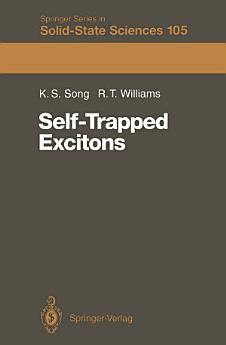Self-Trapped Excitons
K.S. Song · Richard T. Williams
2012. dec. · Springer Series in Solid-State Sciences 105. kötet · Springer Science & Business Media
E-könyv
404
Oldalak száma
reportAz értékelések és vélemények nincsenek ellenőrizve További információ
Információk az e-könyvről
In crystals as diverse as sodium chloride, silicon dioxide, sold xenon, pyrene, arsenic triselenide, and silver chloride, the fundamental electronicexcitation (exciton) is localized within its own lattice distortion field very shortly after its creation. This book discusses the structure if the self-trapped exciton (STE) and its evolution along the path of its return to the ground state or to a defect state of crytal. A comprehensive review of experiments on STEs in a wide range of materials has been assembled, including extensive tables of data. Throughout, emphasisis given to the basic physics underlying various manifestations of self-trapping. The role of the spontaneous symmetry-breaking or "off-center"relaxation in STE structure is examined thoroughly, and leads naturally to the subject of lattice defect formation as a product of STE relaxation. The theory of STEs is developed from a localized, atomistic perspective using self-consistent methods adapted from the theory of defects in solids. At this time of rapid progress in STEs, researchers will welcome the first monograph dedicaded solely to this topic.
E-könyv értékelése
Mondd el a véleményedet.
Olvasási információk
Okostelefonok és táblagépek
Telepítsd a Google Play Könyvek alkalmazást Android- vagy iPad/iPhone eszközre. Az alkalmazás automatikusan szinkronizálódik a fiókoddal, így bárhol olvashatsz online és offline állapotban is.
Laptopok és számítógépek
A Google Playen vásárolt hangoskönyveidet a számítógép böngészőjében is meghallgathatod.
E-olvasók és más eszközök
E-tinta alapú eszközökön (például Kobo e-könyv-olvasón) való olvasáshoz le kell tölteni egy fájlt, és átvinni azt a készülékre. A Súgó részletes utasításait követve lehet átvinni a fájlokat a támogatott e-könyv-olvasókra.








